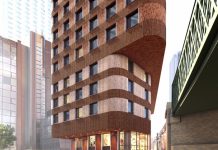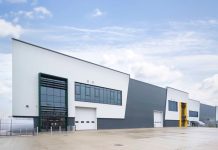BNP Paribas Real Estate has identified a ‘top 10 list’ of highly desirable green places to live and work in London. The borough of Hammersmith and Fulham tops the list, followed by Westminster, Richmond upon Thames, Lambeth, Sutton, Bexley, Croydon, Greenwich, Ealing and Bromley.
The ranking has been generated through BNP Paribas Real Estate’s unique location analysis model, Next X, which draws on a series of environmental data to determine how well these locations perform against specific criteria.
Next X looked at aspects such as supply of environmentally-friendly office space (BREEAM rated), in these locations as well as ultra-low emissions vehicle (ULEV) usage, access to electric vehicle charging stations. It reviewed supply of cycle parking spaces at rail stations and air quality at these places across the UK.
The borough of Hammersmith and Fulham leads the way due to its high increase in ULEVs and its provision of EV charging points, while Richmond also scores highly due to having good cycle parking provision and roadside air quality. Unsurprisingly, Westminster features the highest number of BREEAM-rated office buildings, due to its central location and large supply of office buildings. Hammersmith and Richmond are smaller office markets by comparison, but offer more affordable rents. The asking rent for Grade A space in Hammersmith and Richmond is approximately £59 per sq ft, vs £80 per sq ft in more central locations such as Victoria in Westminster. Data from Next X also shows that Hammersmith is by far the best London location for proximity to road and rail links, while Richmond ranks 11th and Westminster 28th. The findings therefore suggest that Hammersmith is an attractive location for eco-conscious office occupiers looking for affordable but accessible space.
Growing evidence, in the UK and further afield, suggests that sustainable offices are retaining both higher rental and investment values. Locations with strong supply of certified green offices are therefore more likely to attract both businesses, talent and investment.
Over 50% of European respondents in RICS Q3 2020: Global Commercial Property Monitor survey believed that occupier demand for buildings with Green Building Certifications has risen in the past year and over 60% believed that investor demand for sustainable buildings had increased during the same period. 40% respondents also thought that green buildings would receive a rent premium compared to non-certified buildings.
A survey featured in KPMG’s, report “Real Estate in the New Reality” found that 83% of real estate professionals believed that COVID-19 would generate a significant increase in tenants’ demand for sustainable and environmental-friendly buildings. It also found that 85% were either planning to change their portfolio strategy to focus more on sustainable investments or were already focused on ESG as a criteria.
Charlie Tattersall, Senior Research Analyst Capital Markets at BNP Paribas Real Estate said:
“The increasing level of Grade A office supply in Hammersmith and Richmond, along with good green infrastructure and rental discount to Central London, makes these locations highly attractive for environmentally-conscious occupiers. For example, the quality of available office space in Hammersmith has improved markedly over the last 5 years to the point where Grade A space now amounts to approximately two-thirds of total supply. With many occupiers now planning to introduce more sustainable, cost-effective working models, this suggests the appeal of these locations will continue to grow in a rapidly changing office market.”
Carley Bright General Manager, at 245 Hammersmith Road from BNP Paribas Real Estate said:
“It’s exciting to see Hammersmith and Fulham topping the list. It is well deserved as there are so many beautiful spaces in the borough such as community gardens, the many parks and the riverside. 245 Hammersmith Road, one of the largest development in the area for 25 years, has helped to set a new standard for corporate property in the area.
Sustainability has always been at the heart of the 242,000 sq ft scheme, the intention with 245 Hammersmith Road has always been to go beyond that and offer an environment that supports the occupiers and at the same time gives back to the community. This is what makes our space attractive to occupiers. Energy-efficient offices helping to keep running costs down are a given, however what is equally important is the building’s design and its positive impact on productivity and wellbeing. 245 Hammersmith Road offers plenty of natural light to enhance mood and productivity, along with landscaped gardens, a green wall and a roof terrace for recreation. There is plenty of bike space and changing facilities to encourage workers to cycle to work. Coming to work is really worthwhile due to the creative working environment and top facilities, that can’t be provided in the same way when working from home.”
Stephen Wolfe, Head of Commercial, BNP Paribas Real Estate said:
“ESG and the return to the office are the most talked about topics right now, and both are very much interlinked. COVID-19 has made senior business leaders think carefully about the purpose of the office and how it is used. Going forward, the office certainly has a place in supporting business’ success yet it needs to offer much more than desks. The focus will be on creative working environments that offer a reason to come together and collaborate in person. This is why locations with a strong offer of quality sustainable offices with great facilities are attracting both businesses and talent.”
Jonathan Hale, ESG and Sustainability Director at BNP Paribas Real Estate said:
“In addition to both the ‘activity’ and ‘inactivity’ brought on by the commencement of a global pandemic just over a year ago, we have witnessed the accelerated action on Climate Change, an ESG boom and a clear global convergence on Net Zero. As the return to office gathers momentum and in the year of COP26 in Glasgow, it is worth noting the fundamental visible shift across the nation towards business’ focus on sustainable investment opportunities and how ESG is front and centre of informed decision making within the real estate sector.
Landlords and occupiers are beginning to align to the line of thought that a sustainable office building is no longer just a ‘nice to have’; instead the green premium is evermore becoming a reality as green buildings certified to industry standards (which include BREEAM In-Use, LEED, Fitwel, Well and RESET) are seen as a safer, resilient and more attractive option. With certified green buildings being subject to both stringent and tangible sustainable assessment criteria, their advantages can often lead to reduced maintenance, reduced environmental impact, increased occupier comfort and higher returns per sq ft office space.
Certified green buildings are also more appealing to occupiers that increasingly want to ensure that their workplace strategy aligns with their brand values. Given ESG is top of the agenda for most businesses, occupiers want to make sure that the buildings from which they operate support their corporate ambition.
Sustainable buildings also support a healthier working environment. From the many facets which determine a certified green building, better air-quality is often central to most external assessment criteria. With businesses planning for the return to the office as restrictions ease, the importance of maintaining a safe working environment and reducing spread of COVID-19 and new variants has never been more important. Looking ahead, locations that can offer a healthy supply of green, sustainable workspace will no doubt have a strong competitive advantage in securing business and talent over the short medium and long term”






















